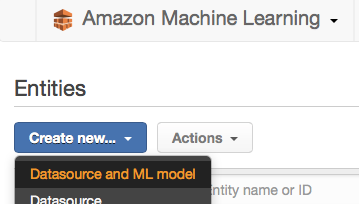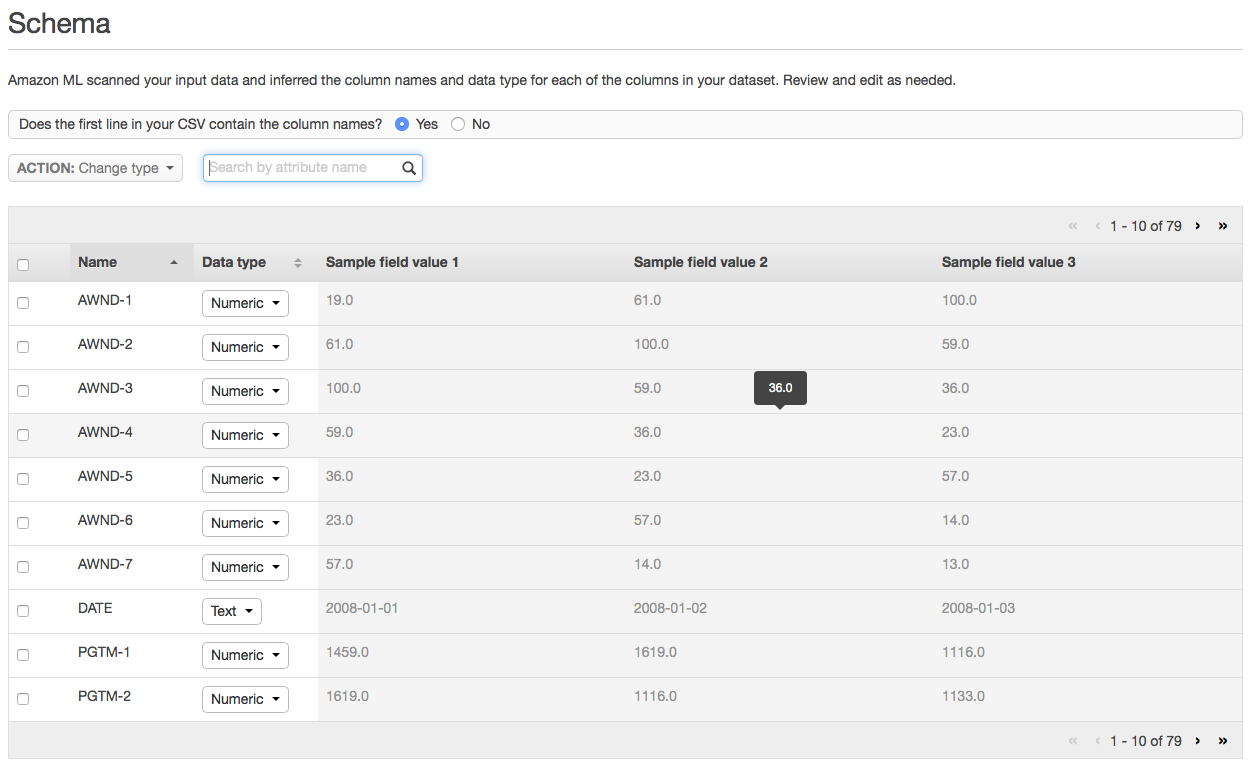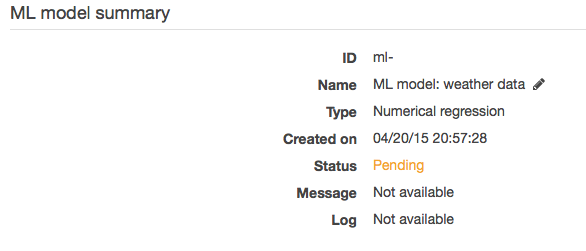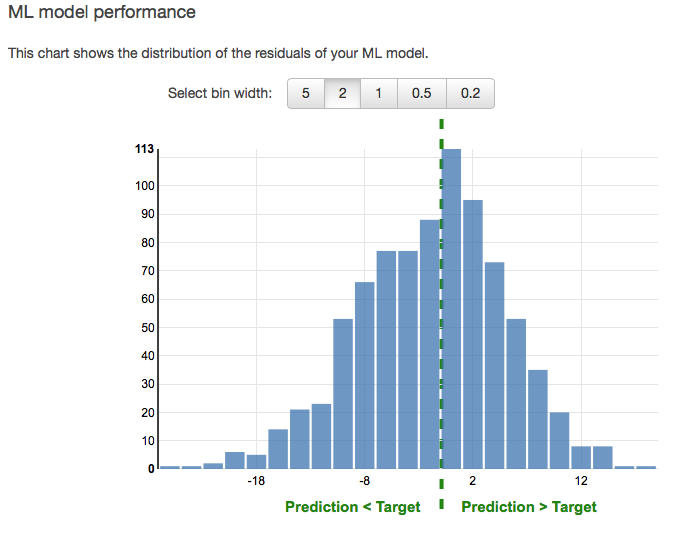Amazon Web Services recently announced Amazon Machine Learning, promising to make large scale machine learning more accessible to non-experts. I was curious to try out this service so I fed it some weather data from Oakland International Airport to see how well and how easily it could predict the maximum temperature on a day given the weather during the last 7 days. I downloaded this data from the National Climatic Data Center (data documentation).
For input into the machine learning model I transformed this data into a csv file where each row contains the readings from the previous week, as well as our target variable, the maximum temperature on that day (see Amazon's data format specs). The code for this transformation is at the end of this article.
Using Amazon Machine Learning
Here are the steps I took to create a machine learning model:
-
Upload data file to S3 (S3 basics).
-
Select Create New... -> Datasource and ML model

-
Select the data from S3.

-
AWS then determines the schema of your data. If this was a real machine learning effort on my part I'd go through and make sure the schema was correct, sometimes one bad data point can throw everything off.

-
Identify your target variable (here the variable was helpfully named "target" in the input data). In this case AWS selected "Numerical regression" as the model type.

-
After a few more click throughs the model is trained. Even for this very small input data the model spent a few minutes in the "pending" state. I wonder if AWS is provisioning something like an EMR cluster to do the computations.

-
After training AWS will evaluate the model, which also takes some time.

-
When complete the evaluation shows a green box with a reassuring message.

-
Selecting "Explore model performance" yields a histogram of residuals with no less than five choices for bin size. With all these binsize options you can really go in depth. The keynote presentation introducing Amazon Machine Learning includes video of clicking the different bin sizes, it felt a little desperate.

-
Once the model is trained you can get predictions either by uploading a file (for batch predictions) or through an API (for real time).
Thoughts
I can see Amazon Machine Learning being very useful to a lot of people, especially as it continues to evolve. The ability to somewhat blindly upload a lot of data and get predictions from it will open up new opportunities to incorporate machine learning into applications.
I was underwhelmed with the post-model analysis provided. It would have been nice to know which coefficients are significantly different from zero. Or the coefficients themselves for that matter. Since Amazon is charging per predication I can see why they keep those hidden. In general I think it will still be very important to have experts identify and engineer features and develop (and iterate on) models to achieve optimal machine learning results.
I find it interesting that Amazon charges $0.10 per 1000 predictions, which in this case requires multiplying and summing 70 numbers. That seems a little steep. The real advantage is that you can go from a big data file to predictions with a few clicks.
Code to transform data into model input.
import pandas as pd
import numpy as np
oak = pd.read_csv('data/oak-data.csv',
na_values=[9999, -9999],
parse_dates=['DATE'])
oak = oak.set_index('DATE')
drop_cols = ['STATION', 'STATION_NAME', 'SNWD',
'SNOW', 'WDF2', 'WDF5']
oak = oak.drop(drop_cols, axis=1)
# convert to deg F
for col in ['TMAX', 'TMIN']:
oak[col] = oak[col].apply(lambda x: (x / 10.) * (9 / 5.) + 32)
feature_dfs = []
for i in xrange(1, 8):
tmp = oak.shift(-i)
tmp.columns = [col + ('-%s' % i) for col in oak.columns]
feature_dfs.append(tmp)
features = pd.concat(feature_dfs, axis=1)
features['target'] = oak['TMAX']
features.to_csv('data/features.csv')
Similar Posts
- IPython 3.0 released, Score: 0.920
- Using sed to make specific text lowercase in place, Score: 0.904
- Using Jupyter notebooks securely on remote linux machines, Score: 0.879
- Getting Started with Spark: Running a Simple Spark Job in Java, Score: 0.840
- Scikit-learn machine learning algorithm flowchart, Score: 0.838
Comments